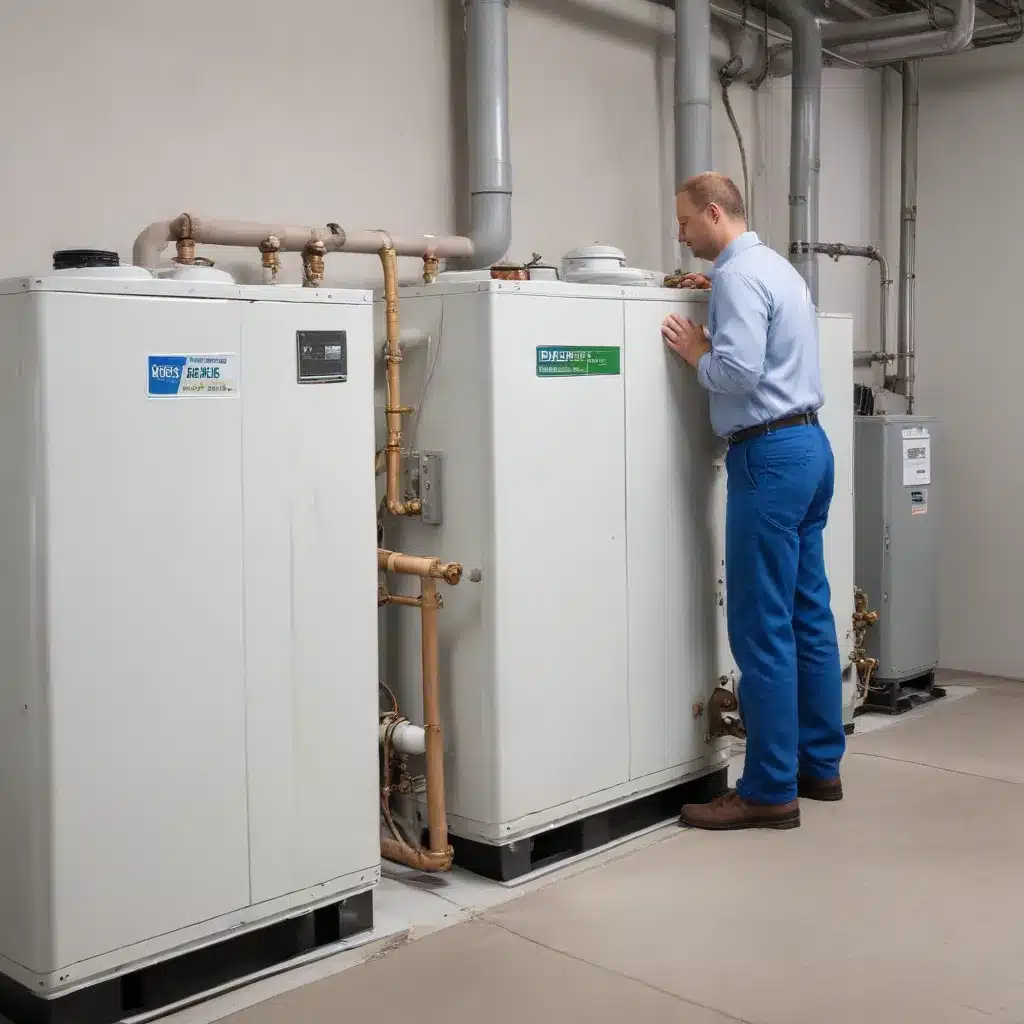
As an HVAC and refrigerant specialist, I understand the critical importance of maintaining compliance in an ever-evolving regulatory landscape. Refrigerants, the lifeblood of modern climate control systems, are subject to a complex web of environmental regulations, safety guidelines, and reporting requirements. Navigating this compliance maze can seem daunting, but with the right strategies and tools, it is possible to achieve clarity and confidence in your refrigerant management practices.
Regulatory Landscape: Key Agencies and Standards
The world of refrigerant compliance is governed by a range of agencies and standards, each playing a vital role in shaping the rules and regulations that HVAC professionals must navigate. In the United States, the Environmental Protection Agency (EPA) takes the lead, overseeing the phase-down of high-global warming potential (GWP) refrigerants and promoting the adoption of more environmentally friendly alternatives. The Department of Transportation (DOT) also plays a crucial part, regulating the transportation and handling of refrigerant cylinders.
International standards, such as those set by the International Organization for Standardization (ISO) and the Air-Conditioning, Heating, and Refrigeration Institute (AHRI), provide important guidelines for equipment performance, safety, and compatibility. Staying up to date with these evolving requirements is essential for HVAC professionals to ensure their systems and practices remain compliant.
Refrigerant Selection: Balancing Environmental Impact, Efficiency, and Compatibility
The selection of the right refrigerant for your HVAC system is a critical decision that requires a careful consideration of several key factors. The environmental impact of a refrigerant, as measured by its GWP, is a primary concern in the era of climate change. Regulatory agencies are pushing for the adoption of low-GWP alternatives, such as hydrofluoroolefins (HFOs) and natural refrigerants, which offer significantly reduced environmental footprints.
In addition to environmental impact, energy efficiency is a key consideration. The thermodynamic properties of a refrigerant can significantly influence a system’s overall efficiency, impacting both energy consumption and operating costs. Compatibility with existing equipment is another crucial factor, as improper refrigerant selection can lead to costly system failures and downtime.
By staying informed about the latest refrigerant options and their respective advantages, HVAC professionals can make informed decisions that balance environmental responsibility, operational efficiency, and system longevity.
Inventory Management: Tracking, Leak Detection, and Reclamation
Effective inventory management is the cornerstone of refrigerant compliance. This includes meticulous tracking of refrigerant quantities, proactive leak detection, and the implementation of reclamation and recycling programs.
Detailed recordkeeping is essential, as regulatory agencies often require comprehensive documentation of refrigerant purchases, usage, and disposal. Leveraging cloud-based inventory management tools can streamline this process, providing real-time visibility into your refrigerant stocks and automatically generating the necessary compliance reports.
Leak detection is another critical component of responsible refrigerant management. Advanced leak detection methods, such as ultrasonic sensors and infrared cameras, can help identify and address refrigerant leaks before they spiral out of control, minimizing environmental impact and compliance risks.
When it comes to end-of-life refrigerants, reclamation and recycling play a pivotal role. Reclaimed refrigerant, which has been purified and restored to its original specifications, can be reintroduced into the supply chain, reducing the need for new refrigerant production. Partnering with reputable refrigerant reclamation and recovery services ensures that your used refrigerants are properly handled and reintroduced into the market in a sustainable manner.
Compliance Documentation and Audits: Preparing for Regulatory Scrutiny
Maintaining comprehensive documentation is essential for navigating the compliance landscape. HVAC professionals must diligently record and report on various aspects of their refrigerant management, including purchases, usage, leak detection, and disposal. This meticulous recordkeeping not only satisfies regulatory requirements but also serves as a valuable resource in the event of an audit.
Regulatory agencies, such as the EPA, conduct periodic inspections and audits to ensure that HVAC systems and practices adhere to the established guidelines. Being prepared for these assessments involves organizing and maintaining all relevant documentation, from equipment service records to refrigerant cylinder tracking logs. Familiarizing yourself with the specific auditing protocols and reporting formats required by the relevant agencies can help streamline the process and minimize the risk of non-compliance.
In the event of a compliance violation, prompt and transparent communication with the authorities is crucial. By demonstrating a proactive approach to addressing any issues and a commitment to rectifying the situation, HVAC professionals can often mitigate the consequences and maintain a positive relationship with the regulatory bodies.
Embracing Sustainable Solutions: The Path Forward
As the HVAC industry continues to evolve, embracing sustainable solutions is no longer just an option – it’s a necessity. The transition towards low-GWP refrigerants and energy-efficient systems is not only driven by regulatory pressures but also by a growing societal demand for environmentally responsible practices.
By proactively adopting sustainable refrigerant products and system optimization strategies, HVAC professionals can position themselves as leaders in the industry. This not only helps protect the environment but also enhances their reputation and competitiveness in the market.
Partnering with suppliers like Airgas Refrigerants can provide invaluable support in navigating the ever-changing landscape of refrigerant compliance. These specialized providers offer comprehensive solutions, including reclamation services, cylinder management, and supply chain logistics, empowering HVAC professionals to focus on their core business while ensuring strict adherence to regulatory requirements.
Conclusion: Embracing Compliance as an Opportunity
Navigating the complex web of refrigerant compliance may seem daunting, but with the right strategies and a proactive mindset, it can become an opportunity for HVAC professionals to distinguish themselves and contribute to a more sustainable future.
By staying informed about the latest regulations, prioritizing refrigerant selection based on environmental impact and efficiency, implementing robust inventory management practices, and maintaining meticulous documentation, HVAC professionals can demonstrate their commitment to compliance and environmental responsibility.
Embracing this challenge not only safeguards your business from regulatory risks but also positions you as a trusted partner in the eyes of your clients and the broader HVAC community. As the industry continues to evolve, the ability to navigate the compliance landscape with confidence and clarity will be a key differentiator, paving the way for long-term success and sustainability.

